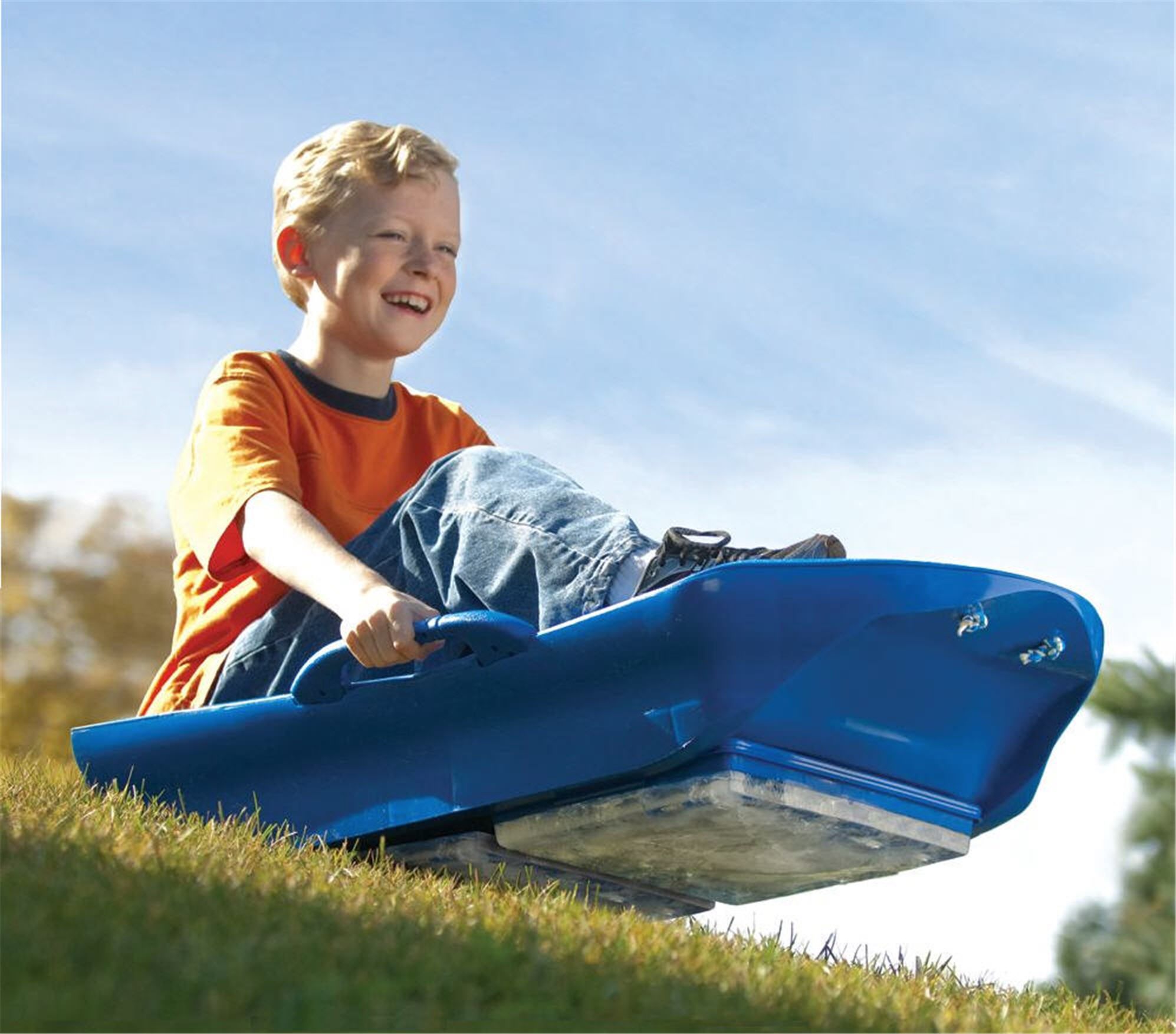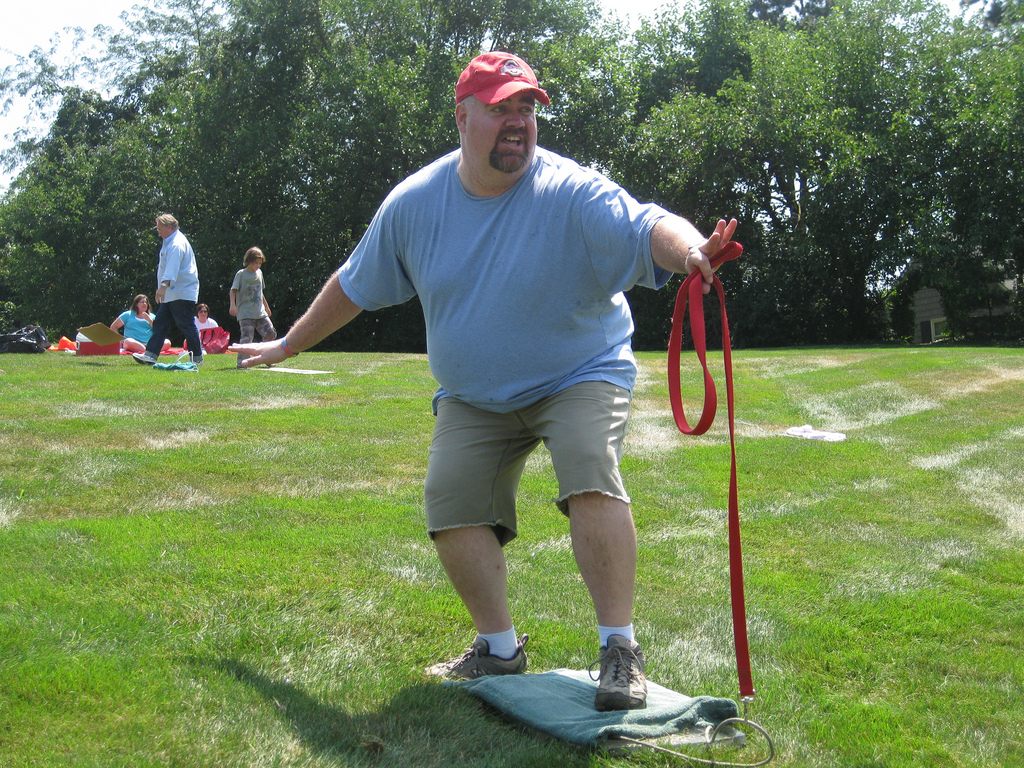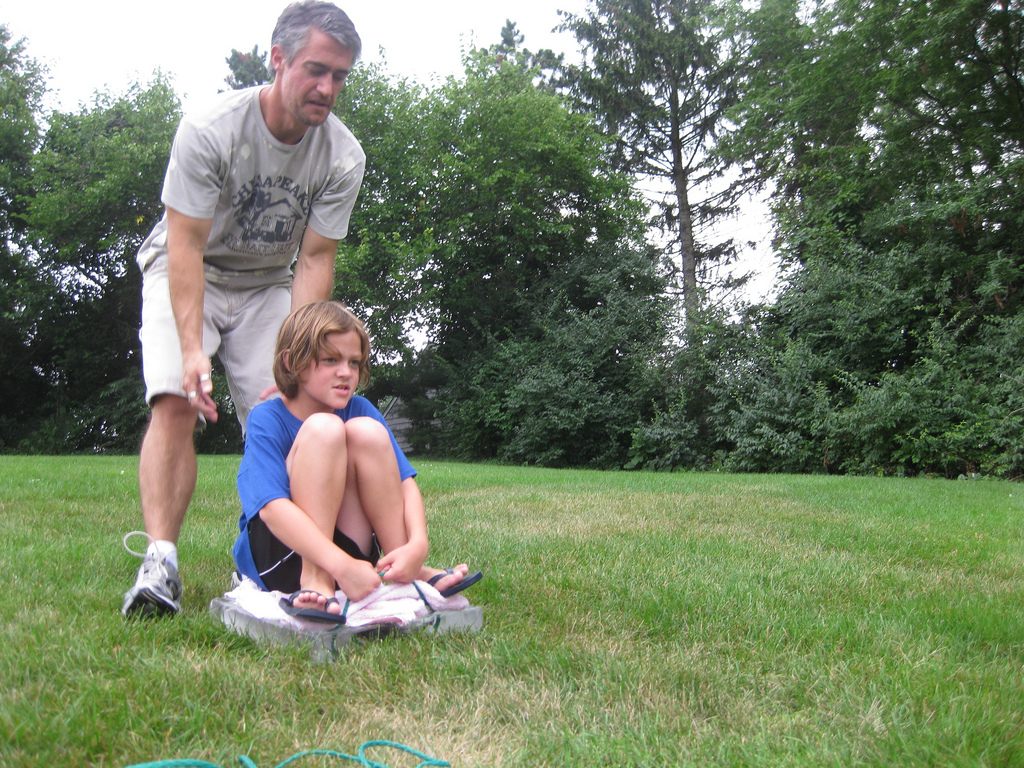Short on Snow? Try Ice-Block Sledding

Bringing a slippery surface to those snowless summer slopes. (Photo: icesled.com)
Winter break, for most of the world, usually means outdoor winter sports. But this year, with predicted temperatures of 71 degrees on Christmas Eve Day in New York City, 65 in Boston, 62 in Cincinnati, and 52 in Ann Arbor, sandwiched by general drizzle (drizzle! in late December!), winter’s not looking so wintry. In Europe, too, skating rinks in London are melting and ski resorts in the Alps have been able to open only a fraction of their slopes. Across the northern hemisphere, prospects for sledding are looking grim.
But—there’s a potential solution, or at the very least, a passable substitute. Instead of sledding on snow, you can sled on blocks of ice, gliding smoothly down those naked, snowless slopes. It’s not exactly sledding, but it’s better than no sledding at all.

This guy tries a surfing stance atop his ice block, with a dog leash extension handle. (Photo: Jonny Roller/flickr)
Ice blocking, as it’s called, is usually a summertime activity. It has no clear origin, but the idea of sliding down grass on ice is one that many different people have stumbled upon, whether parents trying to entertain kids or teenagers trying to let off a little steam. In the 1960s and 70s, ice blocking was apparently popular among groups of high school students in California who smuggled slabs of ice to hit the slopes at night. Groundskeepers and park authorities are not particularly gung-ho about the hobby, since it can damage grass.

Ice blocks are usually between four and six inches thick, and rather heavy. (Photo: Jonny Roller/flickr)
Jonny Roller, creator of Ice Blockers, a website providing everything you need to know about ice blocking, says that he hadn’t actually considered ice blocking in the fall or winter, though he thinks it’s a good idea. It’s nice in summer to sit on the ice and cool off a bit, he says, since in the wintertime cold hands and feet can shorten the outdoor excitement. But Roller’s town of Dublin, Ohio doesn’t look to be getting any subzero temperatures anytime soon.
Jonny’s ice block method, the result of some trial and error, involves lining a box with a trash bag, filling it with water, and letting your freezer work a day or two magic. It’s helpful to drape a rope in the water to provide a handle, and if you’re feeling fancy, you can add colorants or glitter to give your ice block a little extra pizazz. Put a towel or sweatshirt on the block to keep your bottom dry, and to steer, keep one hand dragging on the grass to counter any spinning—et voilà, you’re ice blocking!

Rope handle, towel cushion, and game face: this kid is ready to hit the slopes. (Photo: Jonny Roller/flickr)
The first year Roller and some friends took the ice blocks to their favorite snow sledding slope, they tried going off a small jump they used on inner tubes. They got a little air, but when they landed, the ice broke. Lesson: with ice blocks, no jumps. Roller says the best way to get speed on an ice block is to lie on your stomach or chest in Superman position. Friction with the grass prevents reaching speeds you might on a sled, which means ice blocking can be safer for younger kids.
Roller would love for ice blocking to become a big neighborhood activity. He’s hosted an annual event at a town park but is thinking of doubling his efforts next year to get a bigger turnout.
Ice blocking is the original inspiration behind the Slicer, a four-season sled that incorporates blocks of ice into its design, functioning like a regular plastic sled in winter (or at least, winters with snow), and with compartments for ice in the summer (or snowless winters). The idea behind the Slicer is that if you can’t bring the sled to a slippery surface, then you bring a slippery surface to the sled. It’s ice blocking taken to the next level.
Scott Ireland, head of Slicer’s North America sales, had seen teenagers and their friends buying blocks of ice from the grocery store or making their own ice slabs at home, but he noticed some problems: the former were too small to sit on and the latter extremely heavy. In both cases, the downward, concentrated pressure tended to tear up the grass. The Slicer features an internal grid, which Ireland compares to putting wire mesh into concrete, that allows the ice to be much thinner without breaking and in addition to keeping your tush dry and cushioned.

Sledding in sunglasses and shorts. (Photo: icesled.com)
Ireland says that they see more sales in winter than summer, but in places like California, Georgia, Florida, and Arizona, where the iced-up Slicer is often a kid’s first “sledding” experience. What’s ironic, explains Ireland, is that the better the conditions, the shorter the time frame; it needs to be above freezing for the ice to melt and become slippery rather than sticky, but the slipperier the ice, the faster it disappears.
A lot of people have never heard of ice blocking, says Ireland, so the concept behind the Slicer is not immediately obvious. Its slightly goofy nature has earned it some measure of media exposure, including a spot on David Letterman. Still, it’s hard to imagine replacing snow days with the Slicer.












Follow us on Twitter to get the latest on the world's hidden wonders.
Like us on Facebook to get the latest on the world's hidden wonders.
Follow us on Twitter Like us on Facebook